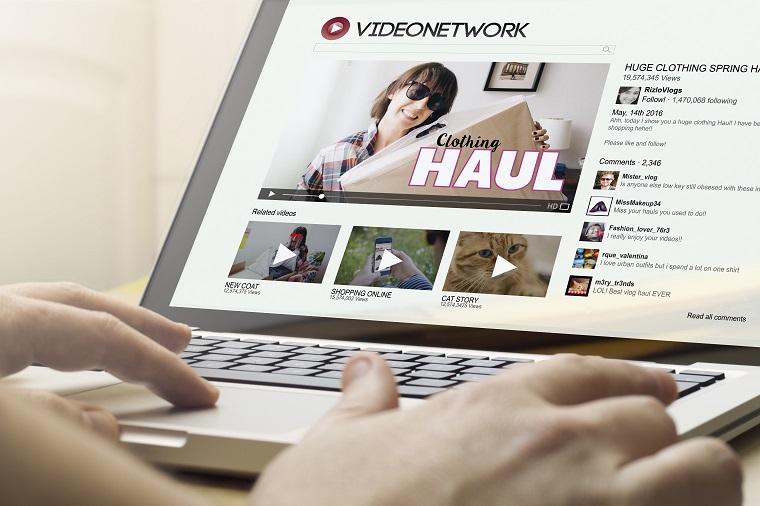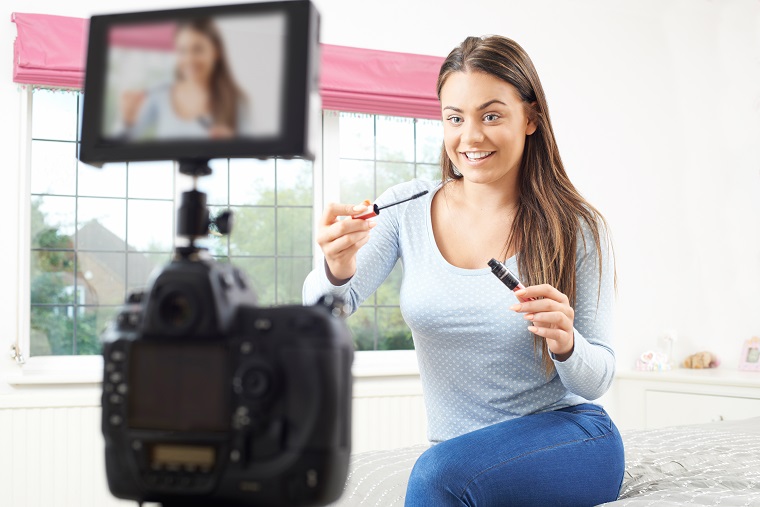Influencer Marketing Masterclass: Mark Dandy
Earlier this month we interviewed Mark Dandy, founder of Parental Influence, a new digital marketing agency, which helps to match the right influencers with the right brands. In the second edition of Masterclass, Mark returns to tell you everything you need to know about developing a content strategy when working with influencers, using software like Vuelio to monitor influencer campaigns, the importance of compiling to advertising standards, and how to use influencer marketing to grow your business.
Research, research, research
“Influencers in some cases are your modern day marketing consultants. They have so much value beyond their audience, and yet many PRs approach them from the wrong angle. Do some research; yes it takes time, but sending a blanket email to a database of bloggers and influencers, and not even including their name, is to some bloggers just lazy, and to others outright offensive. Over and over and over again, the industry professionals will tell you it’s all about building relationships. Take the time to read their blog, would their audience like the product or service you’re promoting? Has the blogger mentioned similar things in the past? What was the response? Get influencers to discuss their previous work, ask them questions showing you value their opinion and feedback, and build some trust. Yes, it takes a while, and yes we live in a world which demands instant results, but if you want to make the most of influencers, take the time to do it properly.”
Don’t be afraid to give control to the influencers
“I think it’s important for PRs to involve the influencers from the beginning. As an influencer Agency we see PRs and brands working with influencers much more often now which is great, but before even opening a blog post or viewing a video, we can often tell it’s sponsored. Selective titles, featured images and hashtags give the game away immediately, and the main reason is a brand or PR demanding things be said or done in a certain way. Don’t be afraid to give control to the influencers. You are hiring them because of the influence they have over their audience, an influence they’ve built through their own content. So let them create your content in their own style, and be part of the ideas phase from the beginning. The results will speak for themselves, trust me.”
Monitor engagement
“Influencer marketing has become very data centric now, with PR and marketing teams looking for the best return on investment and the data to back this up. As with any media buy, you wouldn’t want to be paying influencers that aren’t performing well for your brand, and so being able to track this impact is paramount for brands in this digital age. It’s why tools like the media analysis that Vuelio provides are so useful. You want to be able to track how a brand is perceived. Engagement is one thing, but is that engagement positive or negative? How has that engagement impacted the wider sentiment surrounding the brand? Influencer marketing has the power to spread messages quicker than ever before, so staying on top of these messages and how an audience reacts is so important for PR to manage the reputation of the brand.
Play an active role in your influencer campaign
“I’ve seen some great examples of brands and PRs building trust with influencers whilst working over a range of different campaigns. The goals a brand sets when starting an influencer campaign will depend on how they react, but if the goal is to increase audience awareness and to generate interactions, then the brand has to get involved. This can be sharing the influencers content on their own social media platforms, and tagging the influencer, allowing messages to be shared between brand and influencer and an organic conversation to be created from this. Audiences can then track this conversation, get involved, or be targeted by the brand and the influencer. A great example was a recent campaign based around buying gifts for the family over Christmas. An influencer posted on Instagram about a few gift ideas, and the comments from the audience started to flood in. The brand was there ready to discuss the influencer comments, engaging directly with the audience, following the audience, commenting on their posts, and finding relevant synergies between the brand, the audience, and the influencer all in one post. Many brands can leave the influencer to post and then say “How many likes and comments did we get?” Get involved.
Educate yourself about the rules and regulations of influencer marketing
“As influencer marketing evolves, new ways of advertising to audiences will become available – and the authorities are always playing catch up and banning certain things. This can create problems as if you’ve created a strategy around something which was legal a week ago, but now isn’t, you have to start from scratch. The Competition and Markets Authority do have clear guidelines on bloggers and influencers, as do the Advertising Standards Agency, and so I think the information is there to be read, but more dialogue needs to take place between the authorities and the industry, as at the moment it seems there is a big divide on this subject when it comes to how we present sponsored content to an audience. There is then the other side of the coin as to what is legal but not strictly moral. With this, I think it’s down to individual PR firms. However, I would say that with millennials being the majority of the influencer market, they have a much higher moral standpoint and awareness these days, so taking the slightly grey route may lead to a few trips along the way.”
Storytelling is at the heart of influencer marketing
“I don’t want to delve into the psychology of it all, but when you view influencer content, some of it can be aspirational, some of it can be directly relatable, but either way, there is a story behind that content that is relevant to the audience. The reason influencers are so good at engaging an audience, is they tap into the audience story more than any other form of marketing. Influencers are identifiable and are seen as real people, with a sense of reality, that you don’t get from major celebrities. Therefore, when they create content, they do so easily from an audience point of view, the feedback is instantaneous, and they can judge from an audience’s reaction how that content was perceived and shape future content based on this. At the end of the day though, we all love a good story and if for five minutes at lunch we are taken on a fun ride from our favourite influencers, that’s five minutes well spent.”
Followers do not equal value
“I think when it comes to pricing, we need to be clear about what’s involved. I think it’s down to an influencer to set their price. We can compare it to relevant influencers in their subjects and see how they compare, but ultimately, we all have a price, a sense of our own value; if you offer less, it doesn’t mean an influencer should accept it, just because someone else will. To a large extent is still prevalent, it’s all been about the notion of reach, and so in influencer terms, how many followers do they have? At this point, we’ve put in a basic principal that someone with more followers deserves more money. This is categorically untrue. Followers do not equal value. The value is in the engagement, and the perception of that influencer in their particular field. Return on investment is always going to be the key issue. But we’ve become so data centric, that without clear and incisive data, we seem incapable of making a decision. Influencers are on the borderline of big data. Can we track reach? Can we track engagement? Can we track click-through rates? Ultimately if you provide a link, can we track purchases? Yes to all those questions, but I think sometimes the value in influencer marketing is in what feels right. That might sound like a bit of a cop-out answer, but With brand perception, it can take months, even years to change a person from brand negative, or brand agnostic, to brand positive. We want people to buy things right now, and so data is always about how many people bought our product a week after an influencer featured it, but sometimes the role of influencers is to plant a seed. I like that person, I like what they stand for, but I don’t like that brand. Ok, I still like that person, what they stand for is something I agree with, and I value that they wouldn’t work with a brand that didn’t align with their values. I’m thinking more about the brand. Sometimes that’s all it takes.”
Video is the future of the internet
“Video is the future of the internet, with some industry thought leaders suggesting that we will probably see 80% of the internet as video by 2020. I think with the rise of SnapChat, and Instagram now moving towards “stories” we’re seeing a huge shift towards video content and it’s going to carry on growing. This has two sides of it, as video becomes more popular, there will always be a charge to get more video content out, but then are we just contributing to the noise? Competing with more and more video content producers means your brand is just one of many aiming to get a slice of an ever increasing pie. This is when choosing an influencer is more important than ever, and why I truly believe in the power of micro influencers (those with less than 50,000 followers) as their engagement with their audience is much higher. You will also find that the audience is more of a specialist interest, and that the audience follows a micro influencer for a particular reason. Therefore, aligning brands with the correct audience profile is going to be so key. We all talk about going viral, and the biggest viral video at the moment is the #MannequinChallenge. Brands are jumping on it, and yes it might get a few likes and retweets, but who’s going to remember which brand did what in a month? Not a lot of people. But a constant relationship with a set of key influencers, interested in your brand, with an engaged audience, will be more important than ever.”
Securing a return on investment
“As a PR your responsibility is to your client, and in doing good work for clients, your reputation will grow, you’ll retain more business, and you’ll probably gain a lot of new business off the back of it. Influencers can play a key part in this, as having a great relationship with key influencers in your industry is a unique selling point. At Parental Influence we want to help PRs align themselves with the right people, and nurture relationships to gain the best results for their clients. However, they have to be willing to put in the hard work, the time and the effort to get to know the right influencers and the right matches. If you look at a job spec for a PR these days, it requires a black book of contacts of journalists and influencers. But just having a database of phone numbers and email addresses isn’t good enough anymore. The biggest investment is time. Yes, influencers need to be paid, and yes marketing campaigns cost money. Put the time in, build the relationships, and you’ll start to find that the return on your time investment will grow.















Leave a Comment